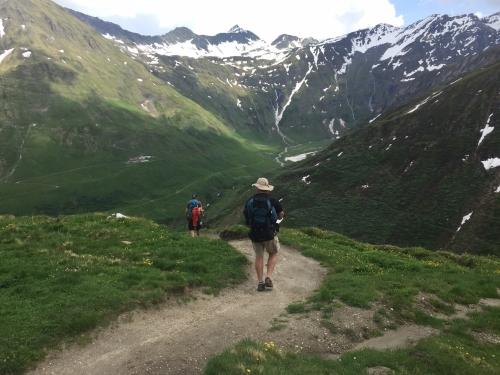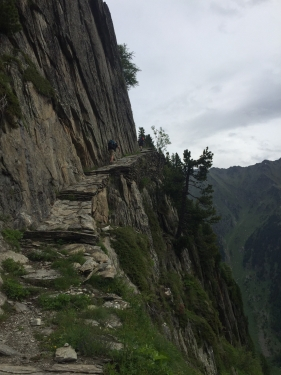As a guide who spends most of his time in Africa it was a pleasure to spend a few days in the Alps exploring the incredibly beautiful Mont Blanc Massif which straddles the French, Italian and Swiss border.
Whilst Mont Blanc is the most prominent mountain, the massif is made up of many peaks, glaciers, glacial valleys, lakes, water falls and forests. During winter the towns of Chamonix in France and Courmajuer in Italy are winter, snowy playgrounds for novices and extreme winter sports folk alike. As spring and summer approach and the snows begin to melt the summer play starts; this area is a haven for trekkers, hard core climbers, mountain bikers, para gliders and people who just want to enjoy the incredible scenery. There is definitely something for everyone.
With two close geologist friends who gave me regular tutorials on the unique geology of the area, I completed six days of the traditional Tour de Mont Blanc which is a trekking route that circumnavigates the whole mountain range. Each day varies significantly, distances range from 12 to 25 km. A complete circumnavigation will see a total ascent and descent of approximately 10,000 metres each way; it is not for the faint hearted and can play havoc on the knees. Non trekkers can enjoy the scenery from the various scenic train and cable car rides, particularly around Chamonix.
There are many accommodation options from luxury hotel to the very comfortable, cabin style refuges in the more remote areas. We chose to carry all we needed with us but there are infinite routes and ways to do the trekking, depending on levels of fitness and alotted time. Some just carry what is needed for the day whilst the rest of their luggage is carried forward by a vehicle. Travellers do not need to rough it by any means.
A complete circumnavigation takes you through Swiss, French and Italian sections, each with their different architecture, terrain, history and of course delicious food. There is nothing like trekking for a few hours to stimulate the appetite, with the reward of good local wines at the end of each day.
Trekking at the very beginning of the summer season gave us the advantage that there were very few other people on the trails and we virtually had the space to ourselves. The disadvantage was that there was still snow on some of the higher passes which meant paying extra attention to the slippery sections. The paths are all very well marked and prepared and there are always alternative routes depending of fitness or time.
I look forward to coming back to his region to try some of the other activities and exploring other areas.



